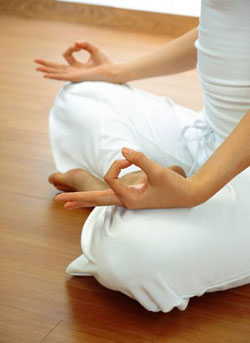
Times are tough. Fortunately, exercise can be performed nearly anywhere. Many people are opting to work out at home, whether for convenience or due to the cost of gym memberships. If this appeals to you, before you race to the store and buy a trunkload of equipment, bars, and weight plates, I urge you to ask yourself why you want a home gym and answer honestly. Or better yet, if you invest the money, will you really use it? You don't want a $100 laundry hanger or $1000 dust collector, do you?
Once you commit to using your new gym, the next steps are to determine what room you will set it up in and how much space you realistically have. Look around the room. Many people with good intentions tell themselves that each time they use their gym, they won't mind moving the couch, the table and chairs, or the desk, but after a while, they start using this as an excuse not to exercise. Will having to slide a couch 4' out of the way be a deterrent? Is there is a television in the room? If so, do you have the self-discipline to not watch Oprah, Judge Judy, or a soap opera instead of working out? Can you control the temperature in this space? If not, can you add a fan? Once you start a, you will probably need it. Who else uses the room? Will there be conflicts? Will someone move your equipment or think it is a toy for them to play with? Don't be intimidated by these questions. Working through them shouldn't be that difficult or time-consuming, especially if you let your family or roommates know what you are doing.
Now the excitement begins because it's time to get started! A simple and inexpensive home gym can be built with five pieces of equipment. They total about $100 and are easy to find and transport home. You can buy them from local exercise stores, online, or perhaps used on your community's Craig's List. Following each is a few of their possible uses.
- Exercise Ball abdominal and core stabilization, upper body exercises)
- Resistance Bands (one full set of resistance bands can give you a total body workout)
- Yoga Mat (push ups, abdominal/core work, stretching, pilates, and of course yoga)
- Pull-Up Bar - some can be installed in doorways or follow the traditional installation method (back and limited bicep work, abdominal/core work), and
- Jump Rope - if you have ceiling clearance (warm up, cardiovascular work).
Also, use what you may already have available in your home:
- Move a chair without wheels or arms into the area (decline push ups, tricep dips)
- Run the stairs (cardiovascular, leg work)
- Stairs (standing calf raises)
- Wall mirror to check your form
- Radio or headphones to play your favorite music, and
- Television or monitor with DVD player for taped routines
If you aren't sure how to start, meet with a personal trainer for a couple of sessions. It will be money well-invested because you will be given a program based on your family history, exercise history, and your goals, you will understand how to properly use your equipment, and you will have learned proper form and technique which reduces the chance of injury.
And as with all exercise, you should wear appropriate shoes and comfortable clothes. Bring a bottle of water and a towel, and get to it!





